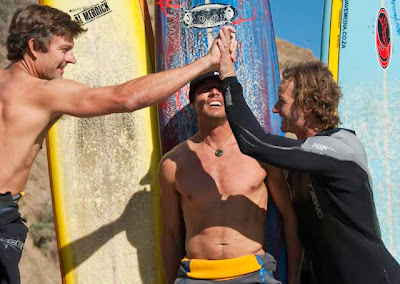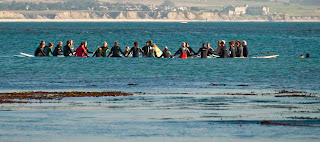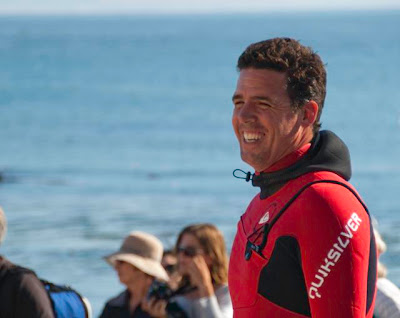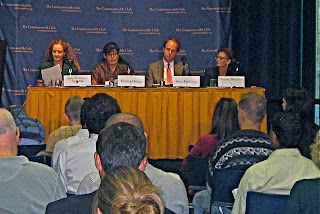

Building Inspector Ed Greene recalls the surreal sight of concrete road barriers, each weighing thousands of pounds, 'bouncing like basketballs' in the 1989 Loma Prieta Quake.
And 'asphalt was like the waves on the ocean,' he said.
A baseball fan, Ed was in the parking lot at the San Francisco Giants' former Candlestick Park, arriving for the World Series game with the Oakland Raiders, when the quake struck. Over the next two days, there was no power. His brother was in the Marina, which was the most devastated area, and the family were unable to get in touch with him.
'What it brings to mind, is that it was quiet. There was no television. It was like a return to yesteryear, all the present-day amenities were gone. Like time was standing still,' he reminisced.
Today marks the 20th Anniversary of the 1989 Loma Prieta quake, the last great quake to devastate the city since the Great Quake of 1906. And since Tuesday of this week, the Big Rumble has been the city's response to both remember the past and prepare for the future.
A major training drill organized by the San Francisco Fire Department's voluntary Neighbourhood Emergency Response Team has been held at the Marina Green and three other sites in the city - see previous blogs.When - as people say, not 'if' - a major quake hits San Francisco again, it will be all hands on deck, mechanical as well as human.
The bomb squad with their search robots equipped with cameras will be there, as will building inspectors responsible for preventing further injury and death from dangerous buildings. There, too, will be dogs to help comfort traumatized victims and rescuers.
Today at the Marina, Ed was manning the mobile command center for the San Francisco Department for Building Inspection. The van a direct result of lessons learned in the Loma Prieta quake.
It comes equipped with emergency radios and telephones, fax machine and internet access. It also provides sleeping accommodation, a lounge and meeting area, and kitchen facility. Staff will be able to live there on shifts and host emergency meetings.
The radios are judged to be particularly crucial. 'They've learnt a lot from the 1989 earthquake. There were no communications in terms of phones,' he said.
The task of Ed and his colleagues will be to categorize the state of buildings and prevent people from entering those that are in a dangerous state. Tucked in drawers in the command center are already items of emergency clothing, the red jackets and hard hats, supplies of caution tape, to mark off buildings quickly before barricades can be set up, and placards that designate the status of a building: red for Unsafe, yellow for Restricted Use, and green for Inspected and 'ok to enter and occupy.'
The Marina was the worst affected area in 1989, but it has gone through a lot of retrofitting. Damage in the next quake might be more spread across the city, said Ed. Probably about 95 per cent of buildings in the Unreinforced Masonry Buildings - UMB - programme have been retrofitted.
Police Officer John Barcojo is a member of the bomb squad. 'We will help in any way we can, with traffic control, evacuations and assist in rescues,' he said.

'These robots here, they've got cameras on them and could be used for searching. 'We will send them into a building where the structural integrity is compromised,' he said.
The bomb squad could also be used in policing evacuated areas. During the Loma Prieta quake there were a lot of looters, said Officer Barcojo. If there was to be another evacuation of the Marina, the homes would be untended. 'Believe it or not, there are some people who would like to take an advantage of a situation like that.'
He was a boy of about 13 years when the Loma Prieta quake struck. Then, he was living on the solid rock of Mount Davidson. 'I remember watching it on TV. We lost power for two days,' he said.
He recalled seeing the fires around the city on TV. Of his home, he added, 'I think some plates fell.' But being a young lad, he said, 'I guess it didn't impact me. Now, I think what would happen if your home burnt down!'
How prepared does he think the city is?
'I personally feel that the city is very well prepared. We train pretty regularly, and we have a lot of specialized units for things like this.'
But for those involved in the rescue work, they will see unpleasant sights, said Lynn Jacklevich, a member of the NERT Adviso

ry Board. Which is why dogs will have an important role. They will be able to provide companionship, to help traumatized rescuers off-load their stress. They will also provide a welcome distraction and comfort to children.
Lynn was at the Marina with Smitty, her 11-year-old half-Sharpei, half combined Labrador and Retriever. She moved to San Francisco from Wisconsin - 'they don't have earthquakes there!' - and has been active in NERT for the last 14 years.
One of the aspect's of NERT is helping to prepare for the care of pets in an earthquake. They have learnt from the Hurricane Katrina disaster in New Orleans that people would prefer to risk their lives rather than abandon their pets, she said.
Animals will tend to be nervous after an earthquake. Apart from care of victims' pets, NERT volunteers themselves who are busy with rescue work will need to find other volunteers to help look after their pets, as the animals will not be able to accompany them to the emergency stations.
San Francisco's Animal Care and Control have been very proactive in trying to plan ahead for this, too, said Lynn.

Also at the Marina was a stall

offering Earth

quake Potato Chips and emergency whistles, and an historical fire engine and displays of the 1906 Great Quake. Mann

ing a stall for the SFFD's Fire Museum and the SFPD's Police Museum was Inspector Liane Corrales.
The police and fire departments, together with the Sheriff's and Emergency Medical Services - EMS - Departments are working on a project to raise funds for a new museum and memorial to their work and those who have lost their lives. The project is titled the Guardians of the City - GOTC - Museum and Memorial.
The week's events of The Big Rumble closed with a commemorative ceremony at the Marina Green to mark the 20th anniversary of the Loma Prieta quake. At the ceremony, a fundraising campaign was launched for the Marina Earthquake Monument.
This will be a memorial of the quake and a tribute to the SFFD. It will be a contemporary sculpture incorporating part of the tower monitor of the 55-year-old fireboat,
Phoenix, and will be set on the seawall.
 Caltrans engineers have been 'custom-fitting and fine-tuning' adjustments to repairs of the Bay Bridge today, said a spokesperson.
Caltrans engineers have been 'custom-fitting and fine-tuning' adjustments to repairs of the Bay Bridge today, said a spokesperson. ident of the eyebar and two of the steel rods crashing down during the Tuesday evening commute as a result of vibration, she said.
ident of the eyebar and two of the steel rods crashing down during the Tuesday evening commute as a result of vibration, she said.






















































